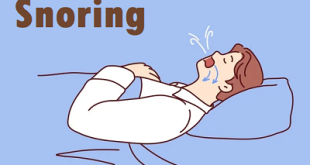Description
Subungual melanoma is a type of melanoma in the nails. Unlike other types of nail melanoma that grow in the surrounding skin, this type begins in the nail matrix. The nail matrix is a part of the nail bed that protects the underlying skin. Sometimes melanoma looks like other conditions that affect the nail bed, such as a bruise.
While subungual melanoma is a relatively rare condition compared to other skin cancers, it can lead to serious complications. Early detection and treatment is a must. It’s important to learn the signs of subungual melanoma so you can get help before cancer spreads.
Pathophysiology
Subungual melanoma occurs because there is increased melanin production by the melanocytes. When activated the melanocytes differentiate into matrix cells and migrate distally.
The histopathological process of subungual melanoma is unique due to the involvement of the nail unit. The pathology demonstrates an increased number of melanocytes in the basal layer of the specimen. This layer contains pleomorphic melanocytes with irregularly shaped nuclei.
Invasive nail melanoma will show a high melanocyte count, two to three times that of benign melanonychia. The other features include multinucleation, atypia, and extensive pagetoid spread of melanocytes. Inflammation is also present in advanced melanoma but not demonstrated in benign melanonychia.
Causes
While we still don’t know what causes subungual melanoma, we do know many of the risk factors associated with its development. These include:
- Previous trauma to the fingers or toes (a common finding)
- Personal or family history of melanoma
- Multiple moles
- Immune suppression, including organ recipients and people with advanced HIV
- Genetics, such as those with the hereditary condition xeroderma pigmentosa (extreme sensitivity to UV radiation)
Risk factors of Subungual Melanoma
Subungual melanoma is more common in patients who
- Have a personal or family history of melanoma
- Have a personal or family history of atypical moles
- Are over 50 years of age
- Are non-Caucasians
Symptoms
Subungual melanoma often starts as a brown or black streak under a toenail or fingernail. A person may mistake it for a bruise.
The main symptoms associated with subungual melanoma are the following:
- Brown or black streaks in the nail without any known injury
- Streaks on the nails that increase in size
- A bruise on the nail that will not heal or move up as the fingernail grows
- Fingernails or toenails that separate from the nail bed
- Darkening skin next to the nail
- A nail that bleeds or develops a nodule
- Thinning, cracking, or distortion of the nail plate
It’s important to note that not all cases of this condition cause pigmentation changes in the nail. While this can make the melanoma more challenging to detect, a telltale sign of the condition is that it usually affects one nail at a time.
Complications of Subungual Melanoma
Early stage melanomas include melanoma in situ (confined to just the upper skin layer called epidermis) or locally invasive melanomas that have spread to the deeper layers of the skin.
Advanced Stage of Melanoma.
Advanced stage Subungual Melanoma can invade into the tissue and bone beneath the nail. It can also metastasize beyond the nail and skin, to the lymph nodes and other organs.
Organs that are commonly involved in metastasis include:
- Lung
- Liver
- Brain
- Bone
- Gastrointestinal tract
Diagnosis and Test
A thorough history and a complete physical exam by a physician are crucial for the diagnosis of Subungual Melanoma. This is followed by some tests which include:
Dermoscopy: Dermoscopy is a diagnostic tool where a dermatologist examines the skin using a special magnifying lens
Tissue biopsy: A sample from the affected nail region is taken and examined under a microscope for signs of cancer by a pathologist. The types of biopsy performed include:
- Excisional biopsy: After numbing the area with a local anesthetic, the entire mole is removed with a small border of surrounding skin. Where possible, this is the generally preferred method
- Punch biopsy: After numbing the area with a local anesthetic, a circular blade is pressed into the skin around the suspicious area, and a round piece of skin removed. This type of biopsy is carried out when the lesion (the suspicious area) is large in size
- Incisional biopsy: After numbing the area with a local anesthetic, a portion of the tumor is removed using a surgical knife
- Sentinel lymph node biopsy: Performed to determine if the melanoma has spread to nearby lymph nodes. A dye is injected into the area from where the melanoma is removed. The first lymph node that takes up the dye is biopsied and examined for cancer cells, under a microscope
Sometimes, biopsy of other large lymph nodes in the area near the melanoma may be performed using fine needle aspiration cytology (FNAC) technique. In this, a sample of cells is removed from the mass, using a syringe with a hollow needle and then examined under a microscope
If the melanoma is suspected to have metastasized (spread) to internal organs, imaging tests like x-ray, CT scan or MRI of the affected areas may be carried out
In rare cases, biopsies of areas other than skin may have to be done, when the primary source/origin of the melanoma cannot be determined
A differential diagnosis to rule out other conditions (such as fungal infection of the nail or splinter hemorrhage) presenting similar signs and symptoms may have to be undertaken
Many clinical conditions may have similar signs and symptoms. Your healthcare provider may perform additional tests to rule out other clinical conditions to arrive at a definitive diagnosis.
Treatment and Medications
The treatment of subungual melanomas has changed considerably in recent years. In the past, amputation of the entire toe or finger was considered the treatment of choice.
Today, many subungual melanomas are treated more conservatively with only the local removal of the tumor. When amputation is indicated, it often involves only the first joint nearest the fingernail. For toenails, amputation to the second joint is more common.
For advance subungual melanoma, other types of therapy may be needed, including:
- Chemotherapy, given either systemically through a vein or directly into the tumor
- Radiation therapy, used primarily as a palliative treatment to decrease pain
- Immunotherapy, a newer form of cancer therapy that aims to stimulate the immune system to fight cancerous cells
- Targeted therapies, drugs able to target the BRAF mutations that occur in 50 percent of subungual melanoma tumors
Response to treatment can vary based largely on the stage of cancer. Outcomes for people with subungual melanoma tend to poorer than other types of melanoma, often due to delay in seeking diagnosis and treatment.
This only highlights the need for action should you find any changes to the nail or skin that seem abnormal or fail to get better. Early intervention is the surest way to achieve treatment success.
Prevention of Subungual Melanoma
Early detection is the key principle with regards to this type of cancer. Routine inspection of the nail beds should be done often to begin noticing changes in color.
Scientists conclude that darker skinned individuals are more prone to be diagnosed with subungual melanoma. Still considered to be a rare disease, this type of cancer can lead to amputation or morbidity if not treated early enough.
Knowing your risk factors, avoiding injury, and; of course, a healthy lifestyle all play a significant role in prevention.
Even though the most commonly affected nail beds are that of the thumbnail and big toe; every nail bed can be a target for melanoma of the nail unit. It is encouraged to obtain a professional health exam from a healthcare provider at least once per year.
 Diseases Treatments Dictionary This is complete solution to read all diseases treatments Which covers Prevention, Causes, Symptoms, Medical Terms, Drugs, Prescription, Natural Remedies with cures and Treatments. Most of the common diseases were listed in names, split with categories.
Diseases Treatments Dictionary This is complete solution to read all diseases treatments Which covers Prevention, Causes, Symptoms, Medical Terms, Drugs, Prescription, Natural Remedies with cures and Treatments. Most of the common diseases were listed in names, split with categories.








I am having a black line at my Thumb nail. I am also the history of a abnormal mole on my hand
considering your symptoms it may lead to melanoma. So kindly get prescribed from doctor.